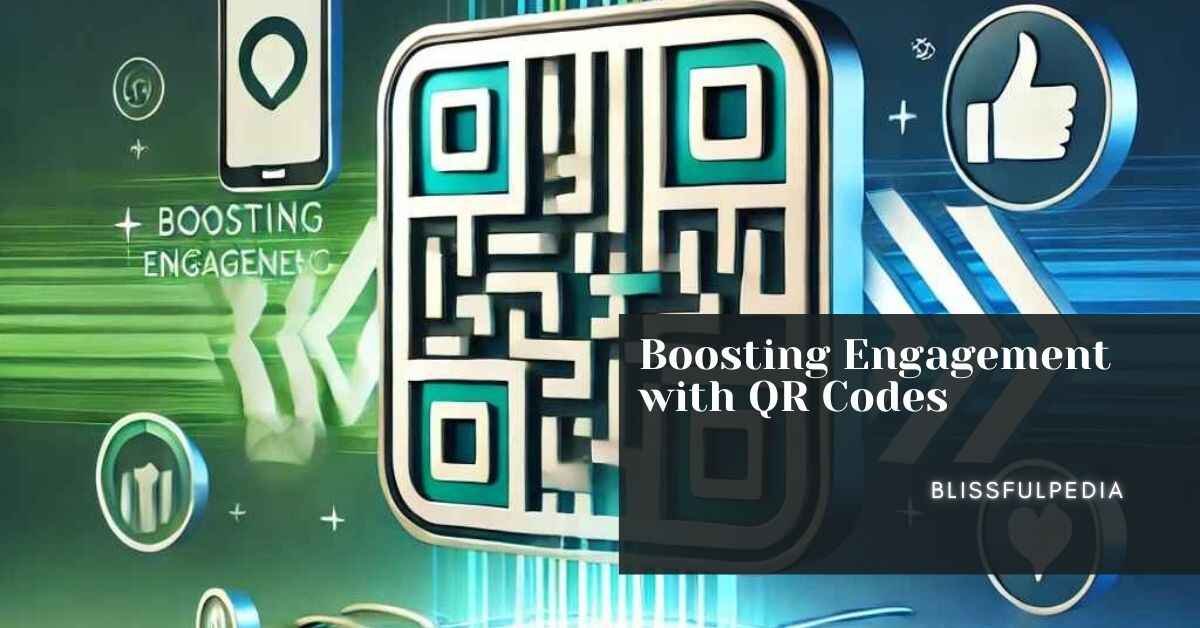In today’s fast-paced digital world, businesses constantly seek innovative methods to captivate their audience and enhance engagement. One tool that has proven effective in bridging the gap between offline and online platforms is the QR code.
Basically, Quick Response (QR) codes are versatile, cost-effective, and user-friendly, making them an ideal choice for boosting customer interaction.
In this article, we will explore various strategies to maximize engagement using QR codes, discuss the benefits, and answer some frequently asked questions.
What Are QR Codes and Why Are They Important?
QR codes are two-dimensional Barcodes that can store information such as URLs, text, or other data. Scannable with a smartphone or dedicated QR scanner, they offer a seamless way to connect users to digital content. Their importance lies in their ability to:
- Provide instant access to information.
- Facilitate a smooth transition between offline and online channels.
- Enhance user experience by eliminating the need for manual input.
By incorporating QR codes into your engagement strategy, businesses can offer convenience while driving customer interaction.
Designing Eye-Catching QR Codes
The appearance of a QR code plays a crucial role in attracting attention. Rather than using standard black-and-white designs, businesses can:
- Add their brand’s logo to the QR code.
- Use vibrant colors that align with their branding.
- Create custom shapes or patterns to make the code more appealing.
A visually attractive QR code not only grabs attention but also instills trust in users, encouraging them to scan and engage with the content.
Using QR Codes on Product Packaging
Product packaging is an excellent place to incorporate QR codes. By adding a scannable code, you can provide customers with:
- Detailed product information.
- Usage tutorials or videos.
- Links to promotional offers or discounts.
This strategy adds value to the customer’s purchase while creating opportunities for further interaction.
Boosting Engagement with QR Codes in Print Media
Despite the digital shift, print media remains relevant. Adding QR codes to flyers, brochures, and posters bridges the gap between physical and digital platforms. Customers can scan the code to:
- Access your website.
- Sign up for newsletters.
- Participate in contests or surveys.
This approach ensures your print campaigns remain engaging and measurable.
Enhancing Events with QR Codes
QR codes can elevate the experience at events by serving multiple purposes, such as:
- Quick access to event schedules.
- Digital check-ins for attendees.
- Providing feedback forms post-event.
By integrating QR codes, businesses can streamline processes and enhance attendee interaction.
Driving Engagement Through Social Media with QR Codes
Social media platforms thrive on engagement, and QR codes can amplify this by:
- Linking directly to your profiles or specific posts.
- Encouraging followers to participate in campaigns.
- Promoting exclusive offers available through QR scans.
This seamless connection can help you grow your online community and boost visibility.
Implementing QR Codes in Email Marketing
Emails with embedded QR codes offer a dynamic way to engage recipients. By scanning the code, users can:
- Redeem special offers.
- Register for events.
- Access exclusive content or promotions.
QR codes in emails make your campaigns interactive and increase the chances of customer engagement.
Incorporating QR Codes into Loyalty Programs
Loyalty programs aim to retain customers and increase their lifetime value. QR codes simplify these programs by allowing customers to:
- Earn rewards through scans.
- Access their loyalty account instantly.
- Redeem points effortlessly.
This convenience enhances user satisfaction and program participation.
Tracking Engagement Through QR Code Analytics
Tracking is essential for understanding the effectiveness of your QR code campaigns. By monitoring metrics such as:
- Click-through rates.
- Conversion rates.
- Scan locations and timings.
You gain valuable insights to optimize your strategies. Tools like Google Analytics can be used to track QR code performance by creating custom campaign URLs.
Best Practices for Using QR Codes Effectively
To ensure success, adhere to these best practices when using QR codes:
- Test all QR codes before deploying them.
- Place them in visible and accessible locations.
- Ensure they lead to mobile-friendly destinations.
- Include a clear call-to-action (CTA) encouraging users to scan.
Following these guidelines increases the likelihood of successful engagement.
FAQs About Boosting Engagement with QR Codes
1. What types of businesses can benefit from QR codes?
Almost all businesses, including retail, hospitality, healthcare, and education, can use QR codes to enhance customer interaction and provide value-added services.
2. Are QR codes secure?
QR codes themselves are secure, but the links they lead to must be carefully managed to avoid phishing or malicious content. Always test and verify links before deploying QR codes.
3. Do QR codes expire?
Static QR codes do not expire, but dynamic QR codes can be updated or deactivated depending on the service provider.
4. What tools are available for creating QR codes?
Various tools, such as QR Code Generator, Canva, and Beaconstac, allow businesses to design custom QR codes easily.
5. How can I measure the success of my QR code campaigns?
Use analytics tools like Google Analytics or built-in tracking features provided by QR code generators to measure scans, clicks, and conversions.
Conclusion
Boosting engagement with QR codes is a simple yet powerful strategy that businesses can implement without significant investment. By creatively incorporating QR codes into product packaging, print media, events, and digital platforms, you can create seamless and interactive experiences for your audience. Don’t forget to track and analyze your campaigns to continually refine your approach and maximize results. QR codes are not just a trend—they are an essential tool for enhancing customer engagement and driving business growth.











